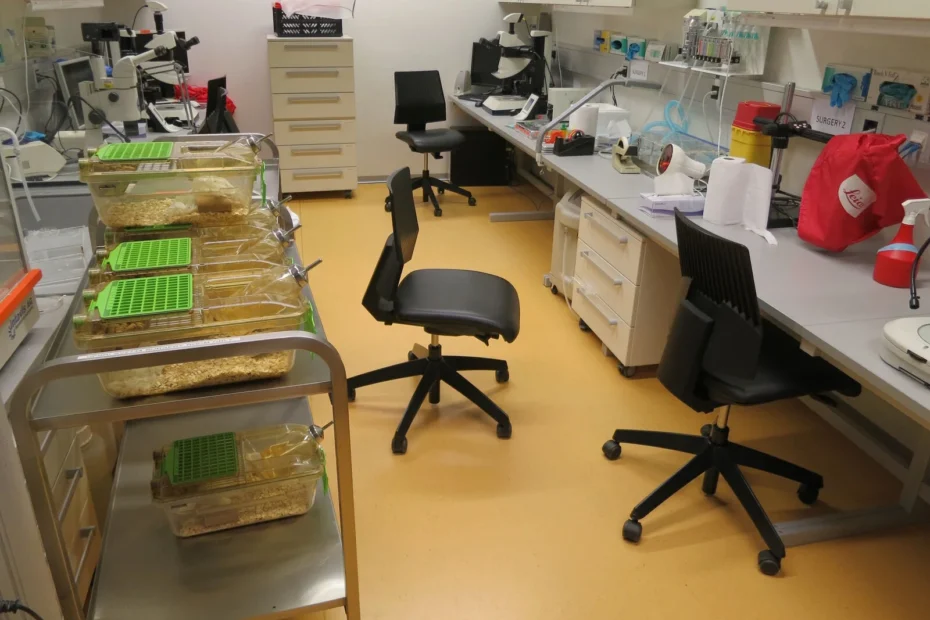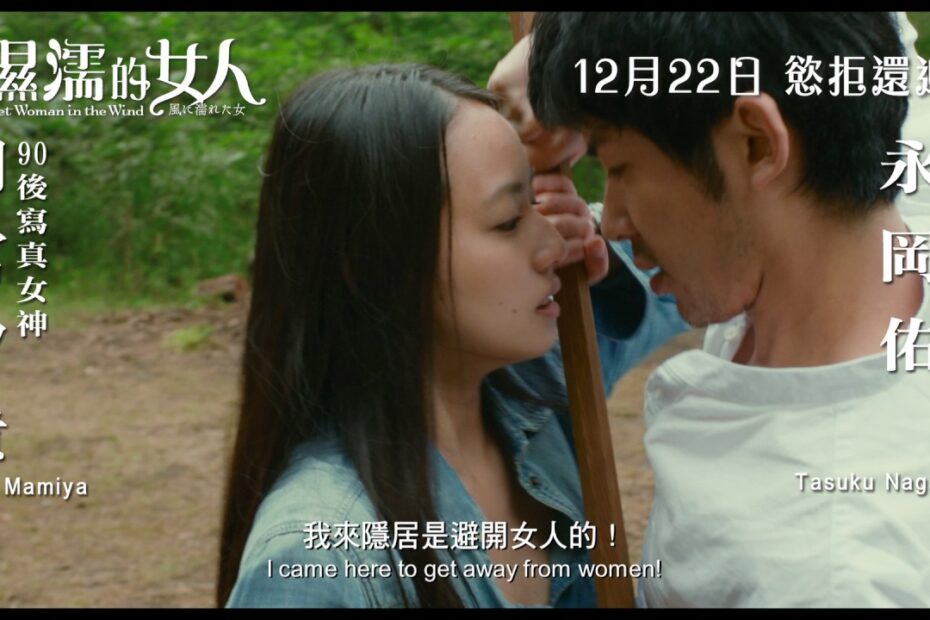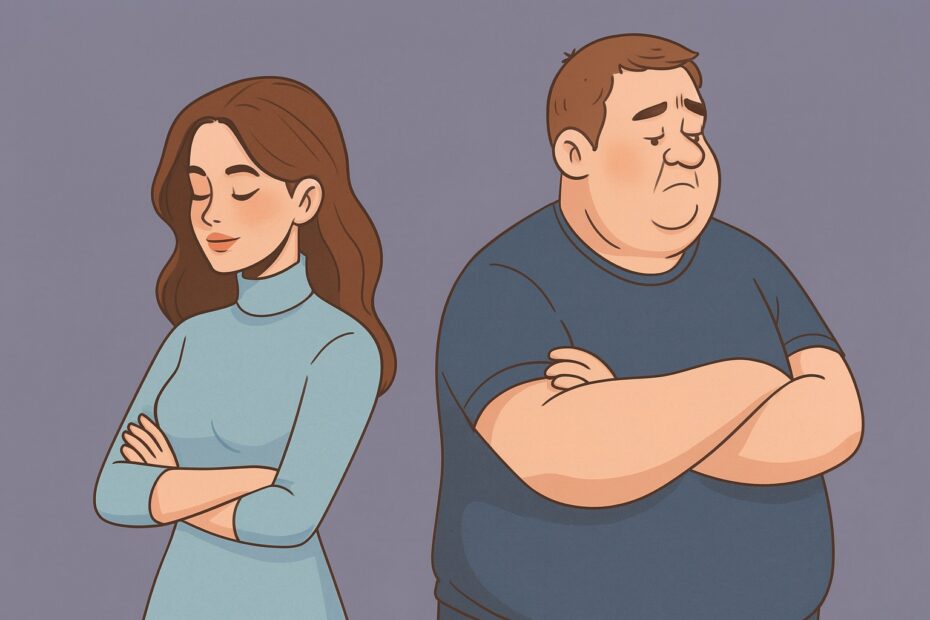매기 캉, 크리스 애펠한스, KPOP 데몬 헌터스
<K-Pop Demon Hunters>는 2025년 6월 넷플릭스를 통해 공개된 미국 애니메이션 장편 영화로, K-팝 아이돌 걸그룹이 비밀리에 악마 사냥을 한다는 독특한 콘셉트를 내세운 뮤지컬 판타지 액션이다. 영화는 세계적으로 유명한 3인조 여성 K-팝 그룹 헌트릭스의 이중생활을… 매기 캉, 크리스 애펠한스, KPOP 데몬 헌터스
R&D 예산 패러다임의 전환: 기초과학과 AI의 동반성장을 위하여
최근 기초생물학 연구를 하는 교수님을 만나 이야기를 나누던 중 연구비가 없어서 너무 힘들다는 이야기를 듣게 되었다. 과제를 계속 못따면 이러다 연구실 문을 닫을지도 모르겠다며 말이다. 지나가는 말로 했지만서도 주변에 그런 이야기를 하는 분들을 제법 자주… R&D 예산 패러다임의 전환: 기초과학과 AI의 동반성장을 위하여
로망 포르노는 어떻게 일본 영화계를 살렸는가 – 한국 영화의 침체를 넘기 위한 교훈
한국 영화산업은 최근 정체기에 접어들었다, 아니 심각한 위기에 접어들었다라는 소식이 심심치 않게 들리고 있다. 이창동, 홍상수, 김기덕, 박찬욱, 봉준호 등 그간 해외영화제에서 각광받는 스타 감독이 등장하였지만, 정작 이들 모두는 50-60대 이상의 연령대이며, 이들을 뒤로하면 최근에는… 로망 포르노는 어떻게 일본 영화계를 살렸는가 – 한국 영화의 침체를 넘기 위한 교훈
급속한 체중 감량이 삶과 관계에 미치는 영향
최근 뉴욕타임스 매거진은 급격한 체중 감량이 부부 관계를 뒤흔드는 예기치 않은 부작용을 조명하는 기사를 발표했다. 의사들은 GLP-1 유사체 계열의 비만 치료제의 신체 부작용에 대해 경고해왔지만, 정작 이러한 약물이 부부 친밀감과 관계에 미치는 예상치 못한… 급속한 체중 감량이 삶과 관계에 미치는 영향
온라인에서 타인의 자랑을 볼 때 느끼는 불쾌감은 어디에서 오는 걸까?
오늘날 페이스북, 인스타그램 등의 소셜 미디어에서는 지인들의 성취나 행복을 담은 게시물을 쉽게 접할 수 있습니다. 이를테면 누군가 여행 사진과 함께 “작년보다 더 성장한 나😊”라는 글을 올리거나, 자녀의 상장 사진을 공유하며 “우리 아이가 해냈어요!”라고 자랑할… 온라인에서 타인의 자랑을 볼 때 느끼는 불쾌감은 어디에서 오는 걸까?
현대 정신과 전문의의 역할 재정립: 과거, 현재와 미래 방향
서론: 변화하는 정신과 전문의의 전문영역 정신과 전문의들은 시대에 따라 그 역할과 전문성이 크게 변화해왔다. 한 세기 전만 해도 정신과 의사는 프로이트로 대표되는 정신분석 등 심층 정신치료의 영역을 주도하며, 환자의 내면 탐색과 대화를 치료의 주된… 현대 정신과 전문의의 역할 재정립: 과거, 현재와 미래 방향
조현병, 우생학, 그리고 낙인: 나치 정신의학의 유산과 현대 정신의학의 교훈
서론 1930~40년대 나치 독일에서는 의료인이 자신의 환자들을 조직적으로 학살한, 역사상 유례없는 비극이 발생하였다(Luty, 2014). 나치 정권은 우생학적 인종위생 이념에 따라, 정신질환자 특히 조현병 환자들을 유전적으로 열등하며 생존 가치가 없는 존재로 낙인 찍고, 이들을 대상으로… 조현병, 우생학, 그리고 낙인: 나치 정신의학의 유산과 현대 정신의학의 교훈
교토 영화공간 데마치자의 여정
1897년 초, 교토의 릿세이(立誠) 소학교 자리에서 일본 최초의 영화 상영 시연이 이루어졌다. 이케하타 가쓰타로라는 사업가가 프랑스 루미에르 형제를 직접 만나 들여온 발명품, 시네마토그래프를 통해서였다. 그는 1896년 프랑스 방문 중 오귀스트 루미에르로부터 “움직이는 사진” 즉… 교토 영화공간 데마치자의 여정
대규모 언어 모델은 우리의 뇌를 어떻게 망가뜨리는가
발달심리학과 신경과학 연구들은 적당한 수준의 스트레스나 좌절 경험이 오히려 두뇌 발달에 필수적임을 이야기한다. 스트레스는 과도할 경우 해롭지만, 너무 없을 경우 오히려 스트레스 대응 체계의 미성숙을 초래한다. 즉, 어린 시절 전혀 좌절이나 어려움을 겪지 않으면 막상… 대규모 언어 모델은 우리의 뇌를 어떻게 망가뜨리는가
김금희, 대온실 수리 보고서
김금희 작가를 처음 알게 된 것은 2020년, 그 유명한 이상문학상 수상 거부 사건을 통해서였다. 당시 문학상 운영 주체인 문학사상사가 내건 수상 조건에는 저작권 양도, 표제작 불허 등 작가의 고유 권리를 침해할 수 있는 불합리한 조항들이… 김금희, 대온실 수리 보고서
최은영, 쇼코의 미소
최은영은 2013년 중편 <쇼코의 미소>로 작가세계 신인상을 수상하며 등단했다. 그리고 2016년, 등단작을 포함한 첫 소설집 <쇼코의 미소>를 출간한다. 나는 오래전부터 이 작품의 제목에 끌렸다. 쇼코의 ‘미소’라는 말이 이상하게 마음에 남았고, 언젠가는 읽어야지 생각만 하다가 어느… 최은영, 쇼코의 미소
에드워드 양, 하나 그리고 둘
에드워드 양은 1980년대에 등장한 대만 뉴웨이브 영화를 대표하는 감독 중 한 사람이다. 1947년 타이베이에서 태어난 그는 미국에서 공학을 공부하고 엔지니어로 일하다가, 영화에 대한 열정으로 뒤늦게 감독의 길에 들어섰다. 1983년 옴니버스 영화 <해변의 하루>로 데뷔한 이후,… 에드워드 양, 하나 그리고 둘
안드레이 타르코프스키, 솔라리스
1960~70년대 소비에트 영화의 거장 안드레이 타르코프스키는 현실과 영혼을 아우르는 시적 영상미로 세계 영화사에 독보적 흔적을 남긴 인물이다. 그의 세 번째 장편 <솔라리스>는 SF라는 외양을 두르고 있지만, 전통적 장르 공식을 넘어 인간 내면의 영적 성찰을 추구한… 안드레이 타르코프스키, 솔라리스
미켈란젤로 안토니오니, 붉은 사막
1960년대 이탈리아 영화계를 대표하는 거장 미켈란젤로 안토니오니는 현대인의 소외와 불안을 실험적 영화언어로 탐구한 감독이다. <붉은 사막>은 안토니오니가 이전에 발표한 이른바 “소외 3부작” – <정사>, <밤>, <일식> – 이후 내놓은 첫 컬러 영화로서, 그의 경력에 새로운… 미켈란젤로 안토니오니, 붉은 사막
오즈 야스지로, 만춘
오즈 야스지로는 일본 영화사의 거장으로, 일상의 가족사를 담담하면서도 깊이 있게 그려낸 독자적인 영화 세계로 유명하다. 그는 1920년대에 영화 경력을 시작하여 많은 작품을 남겼지만, 특히 전후 시대에 들어서면서부터 특유의 정제된 스타일과 가족 드라마에 집중한 작품들로 국제적인… 오즈 야스지로, 만춘
로베르 브레송, 호수의 랑슬롯
<호수의 랑슬롯>은 프랑스 거장 로베르 브레송의 만년기에 속하는 작품으로, 중세 아서왕 전설을 브레송 특유의 미니멀리즘 영화 언어로 재해석한 영화이다. 브레송은 1950~60년대에 이미 <시골 사제의 일기>, <소매치기>, <무셰트> 등으로 독자적인 영화 미학을 확립한 인물이며, 절제된 형식주의와… 로베르 브레송, 호수의 랑슬롯
허우 샤오시엔, 남국재견
허우 샤오시엔은 대만 뉴웨이브를 대표하는 거장으로, 잔잔하면서도 깊은 울림을 주는 영화 세계를 구축해왔다. 그의 작품들은 길게 지속되는 롱테이크와 절제된 서사로 유명하며, 개인의 기억과 역사를 섬세하게 포착하는 것으로 평가받는다. 1980년대부터 90년대 초반까지 허우는 <비정성시>, <희몽인생>, <호남호녀>… 허우 샤오시엔, 남국재견
장 뤽 고다르, 카르멘이라는 이름
1960년대 프랑스 누벨바그를 대표하는 장 뤽 고다르는 급진적인 영화 형식 실험과 사회 비판적 주제로 영화사의 새 지평을 연 거장이다. 1960년대 후반 누벨바그 운동이 한차례 막을 내린 뒤, 고다르는 1970년대에 디자가 베르토프 그룹을 결성하여 정치적 선전… 장 뤽 고다르, 카르멘이라는 이름
압바스 키아로스타미, 클로즈 업
이란 출신의 압바스 키아로스타미는 현대 영화사에서 가장 독창적이고 영향력 있는 감독 중 한 사람으로 꼽힌다. 1970년대부터 영화를 만들기 시작한 그는 이란 뉴웨이브 영화 운동의 주축이자, 세계적인 거장으로 명성을 얻었다. 그의 작품들은 주로 일상의 평범한 사람들을… 압바스 키아로스타미, 클로즈 업
스탠리 큐브릭, 로리타
<로리타>는 큐브릭이 블라디미르 나보코프의 동명 소설을 영화화한 작품으로, 그의 커리어에서 중요한 전환점으로 평가된다. 이 영화는 미성년 소녀에 대한 중년 남성의 금지된 사랑이라는 파격적 소재를 다루었는데, 당시 검열이 심했던 할리우드 환경에서 이를 영화로 구현한 것 자체가… 스탠리 큐브릭, 로리타
아오야마 신지, 유레카
아오야마 신지는 1990년대 중반부터 두각을 나타낸 일본의 영화감독이다. 그는 릿쿄 대학 시절 저명한 평론가 하스미 시게히코의 영향을 받으며 영화 미학을 탐구했고, 졸업 후 구로사와 기요시 등의 연출부를 거치며 현장 경험을 쌓았다. 1996년 첫 장편 <헬프리스>로… 아오야마 신지, 유레카
잉마르 베리만, 신의 침묵 3부작
스웨덴 거장 잉마르 베리만의 <거울을 통해 어렴풋이>, <겨울빛>, <침묵>은 흔히 ‘신의 침묵 3부작’ 또는 ‘신앙 3부작’으로 불리며, 베리만 영화 중 종교적 주제의 정점으로 평가된다. 이 세 작품은 각각 확고했던 신앙의 “확실성의 확인”, 그 가면이 벗겨지는… 잉마르 베리만, 신의 침묵 3부작
수잔 손탁, 해석에 반대한다
수잔 손탁은 20세기 후반 미국을 대표하는 지식인이자 비평가였다. 뉴욕에서 유대인 가정에 태어나 일찍부터 문학과 철학에 심취한 그는, 시카고 대학교와 하버드 대학교에서 영문학과 철학을 전공하며 학문적 토대를 쌓았다. 대학 시절부터 사르트르와 카뮈 등 유럽 실존주의 사상과… 수잔 손탁, 해석에 반대한다
안드레이 타르코프스키, 봉인된 시간
안드레이 타르코프스키는 20세기 영화사에서 가장 시적이고 영적인 영화 세계를 구축한 러시아의 영화 감독이다. 그는 단 7편의 장편영화를 남겼지만, <이반의 어린 시절>, <안드레이 루블료프>, <솔라리스>, <거울>, <스토커>, <노스탈지아>, <희생> 등 그의 작품들은 독창적인 미학과 깊은 철학적… 안드레이 타르코프스키, 봉인된 시간
로베르 브레송, 시네마토그래프에 대한 노트
로베르 브레송은 20세기 프랑스 영화사에서 독보적인 위치를 차지하는 영화감독이다. 제2차 세계대전 이후 프랑스 영화계를 논할 때 빠지지 않는 거장으로, 총 열세 편의 작품을 통해 자신만의 미학적 스타일을 구축했다. 극도의 절제와 미니멀리즘, 비전문 배우(그가 일컫는 ‘모델’)의… 로베르 브레송, 시네마토그래프에 대한 노트
질 들뢰즈, 시네마 1: 운동-이미지
프랑스 철학자 질 들뢰즈는 20세기 후반 포스트모던 철학을 대표하는 인물로, 기존의 대륙철학 전통과 거리를 둔 독창적 사유로 주목받았다. 그는 차이, 다중성, 욕망 등의 개념을 바탕으로 경험론적 생명철학을 전개하였고, 스피노자의 내재성의 평면 개념을 옹호하면서 모든 존재를… 질 들뢰즈, 시네마 1: 운동-이미지
표도르 도스토예프스키, 가난한 사람들
표도르 미하일로비치 도스토옙스키는 19세기 러시아를 대표하는 소설가로, 인간 심리의 심층을 탐구하고 철학적 주제를 문학에 담아낸 거장이다. 그는 모스크바의 가난한 의사 가정에서 태어나 어려서부터 문학에 관심을 보였으며, 청년기에 상트페테르부르크 군사공학학교에 입학했지만 문학에 대한 열망으로 군대를 떠나… 표도르 도스토예프스키, 가난한 사람들
이청준, 선학동 나그네
이청준은 한국 현대문학을 대표하는 소설가로, 깊이 있는 사유와 독창적인 서사로 잘 알려져 있다. 전라남도 장흥에서 태어난 그는 단편 <퇴원>으로 등단한 이후 왕성한 창작 활동을 펼쳤다. 이청준의 문학은 크게 두 가지 경향으로 나눠볼 수 있다. 하나는… 이청준, 선학동 나그네
윤후명, 둔황의 사랑
윤후명(1946~2025)은 시인이자 소설가로서 한국 문단에서 독특한 위치를 차지한 작가이다. 강원도 강릉에서 태어나 연세대학교 철학과를 졸업한 그는, 1967년 시 <빙하의 새>로 등단하여 시작 활동을 이어가다 1979년 단편소설 <산역>이 신춘문예에 당선되면서 소설가로도 데뷔했다. 이후 시와 소설의 경계를… 윤후명, 둔황의 사랑
토마스 만, 마의 산
토마스 만은 20세기 독일을 대표하는 소설가이자 평론가이다. 그는 부덴브로크 가의 사람들, 베니스에서의 죽음, 마의 산 등으로 세계적인 명성을 얻었으며, 1929년 노벨 문학상을 받았다. 전통적인 사실주의적 서술에 깊은 사색과 풍자를 결합한 만의 작품들은 예리한 심리 분석과… 토마스 만, 마의 산
앙리 베르그송, 창조적 진화
앙리 베르그송은 20세기 초 프랑스 철학을 대표하는 인물로, 지속, 직관, 엘랑 비탈 등의 핵심 개념을 통해 독자적인 형이상학 체계를 구축했다. 지속은 베르그송 철학의 출발점으로서 인간이 즉각적으로 경험하는 내적 시간의 흐름을 가리킨다. 그는 칸트 이후 철학이 시간과 공간을… 앙리 베르그송, 창조적 진화
발터 벤야민, 1900년경 베를린의 유년시절
20세기 초반 유럽 지성사의 이정표로 꼽히는 발터 벤야민은 철학과 문학, 미학과 문화비평을 넘나든 독창적인 사상가이다. 그는 유럽 모더니티가 낳은 최고의 비평가 중 한 사람으로, 부유한 유대인 가정에서 태어나 베를린에서 유년을 보냈지만 대학 시절부터 방랑하는 유학생이자… 발터 벤야민, 1900년경 베를린의 유년시절
루트비히 비트겐슈타인, 철학적 탐구
루트비히 비트겐슈타인은 20세기 분석철학을 대표하는 철학자로, 특히 언어철학과 논리학에 지대한 영향을 미쳤다. 오스트리아 빈의 부유한 가정에서 태어나 케임브리지 대학에서 버트런드 러셀의 지도를 받으며 철학을 공부한 그는, 초기 저작인 <논리-철학 논고>를 통해 언어와 세계의 관계에 대한… 루트비히 비트겐슈타인, 철학적 탐구
에마뉘엘 레비나스, 전체성과 무한
에마뉘엘 레비나스는 20세기 프랑스 철학을 대표하는 사상가로서, 서구 철학 전통에 근본적인 전환을 촉발한 ‘타자의 윤리학’을 주창하였다. 그는 자신의 주요 저작인 <전체성과 무한>을 통해 윤리를 제일철학으로 격상시키며, 전통적인 존재론 중심의 철학을 비판하고 타자와의 관계 속에서 형이상학적… 에마뉘엘 레비나스, 전체성과 무한
미셸 푸코, 광기의 역사
미셸 푸코는 20세기 프랑스를 대표하는 철학자로서 지식과 권력의 관계를 탐구한 사상가이다. 그는 파리 고등사범학교에서 철학과 심리학을 공부하며 전통 철학과 인간 과학 전반에 걸친 탄탄한 배경을 쌓았다. 초기에는 에드문트 후설과 마르틴 하이데거로 대표되는 현상학과 실존주의의 영향권에서… 미셸 푸코, 광기의 역사
은희경, 새의 선물
은희경(1959년생)은 1990년대 중반 등장하여 한국 문학에 신선한 바람을 불러일으킨 소설가이다. 전북 고창 출신으로, 숙명여대와 연세대에서 문학을 공부한 그는 한동안 교사와 기자로 일하다가 서른 중반에 본격적으로 글쓰기에 나섰다. 1995년 단편소설 <이중주>로 동아일보 신춘문예에 당선하며 문단에 등단한… 은희경, 새의 선물
앙투안 드 생텍쥐페리, 인간의 대지
앙투안 드 생텍쥐페리(1900-1944)는 비행사이자 작가로서, 하늘과 문학을 함께 누빈 독특한 이력을 지녔다. 그는 20세기 초 프랑스의 항공 우편 조종사로 커리어를 시작하여, 초기 항공 개척 시대의 모험과 위험을 몸소 겪었다. 생텍쥐페리는 이러한 비행 경험을 섬세한 필치로… 앙투안 드 생텍쥐페리, 인간의 대지
시몬느 베이유, 중력과 은총
프랑스 출신의 철학자이자 사상가인 시몬 베이유는 20세기 지성사에서 독보적인 위치를 차지하는 인물이다. 알베르 카뮈가 그녀를 가리켜 “우리 시대의 유일한 위대한 정신”이라고 불렀을 정도로, 베이유는 짧은 생애 동안 깊이 있는 사회 참여와 급진적인 영성 추구를 병행했다.… 시몬느 베이유, 중력과 은총












































